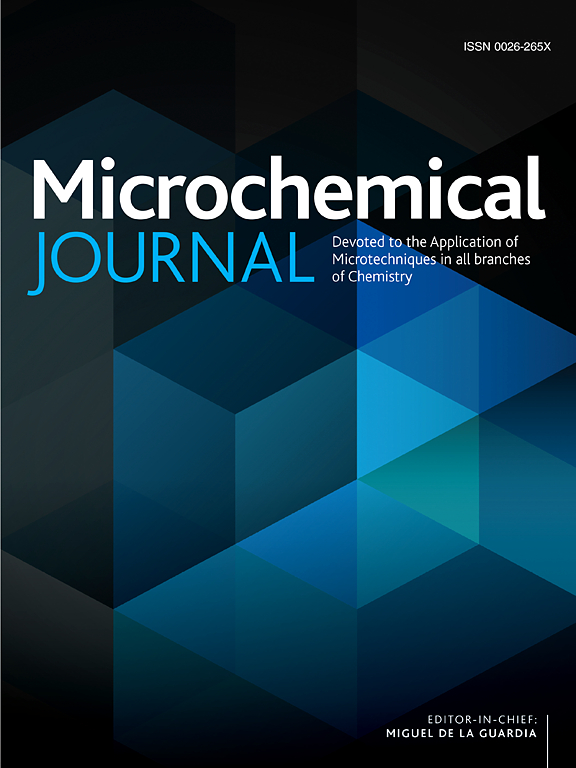NiWO4 with oxygen vacancy induced Au nanoparticle signal amplification for electrochemical detection of swine fever virus
IF 4.9
2区 化学
Q1 CHEMISTRY, ANALYTICAL
引用次数: 0
Abstract
Classical swine fever virus (CSFV) represents a significant threat to the pig industry, capable of causing devastating infectious diseases.. It is an urgent need to identify and quantify viruses with a rapid, sensitive and accurate technology. Integration of nanotechnology will allow the development of microdevices combined with electrochemical technology for efficient virus detection. Here, the electrochemical characteristics of MWCNTs-decorated Au-NiWO4 are studied, and an ideal nanomaterial is constructed for immunosensor of CSFV antigen identifying based on steric effects about oxygen vacancy coupling CSFV enhanced reactant adsorption. The developed immunosensor detects CSFV over a range of 2 × 10-13μg·mL−1-8 × 10-9μg·mL−1, and with a detection limit of 1.58 × 10-13 μg·mL−1. In addition, AuNPs/NiWO4/Ć shows an excellent linear relationship at the scanning speed of 10 ∼ 100 mv/s, and the relative standard deviation (RSD) was found to be only 0.60 %. The synergistic integration of MWCNTs/GO, AuNPs and electroactive Au-NiWO4 provides superior signal response when used for the quantification of CSFV from CSFV antigen samples, suggesting the application prospects of this nanomaterial in detection.

求助全文
约1分钟内获得全文
求助全文
来源期刊

Microchemical Journal
化学-分析化学
CiteScore
8.70
自引率
8.30%
发文量
1131
审稿时长
1.9 months
期刊介绍:
The Microchemical Journal is a peer reviewed journal devoted to all aspects and phases of analytical chemistry and chemical analysis. The Microchemical Journal publishes articles which are at the forefront of modern analytical chemistry and cover innovations in the techniques to the finest possible limits. This includes fundamental aspects, instrumentation, new developments, innovative and novel methods and applications including environmental and clinical field.
Traditional classical analytical methods such as spectrophotometry and titrimetry as well as established instrumentation methods such as flame and graphite furnace atomic absorption spectrometry, gas chromatography, and modified glassy or carbon electrode electrochemical methods will be considered, provided they show significant improvements and novelty compared to the established methods.
 求助内容:
求助内容: 应助结果提醒方式:
应助结果提醒方式:


